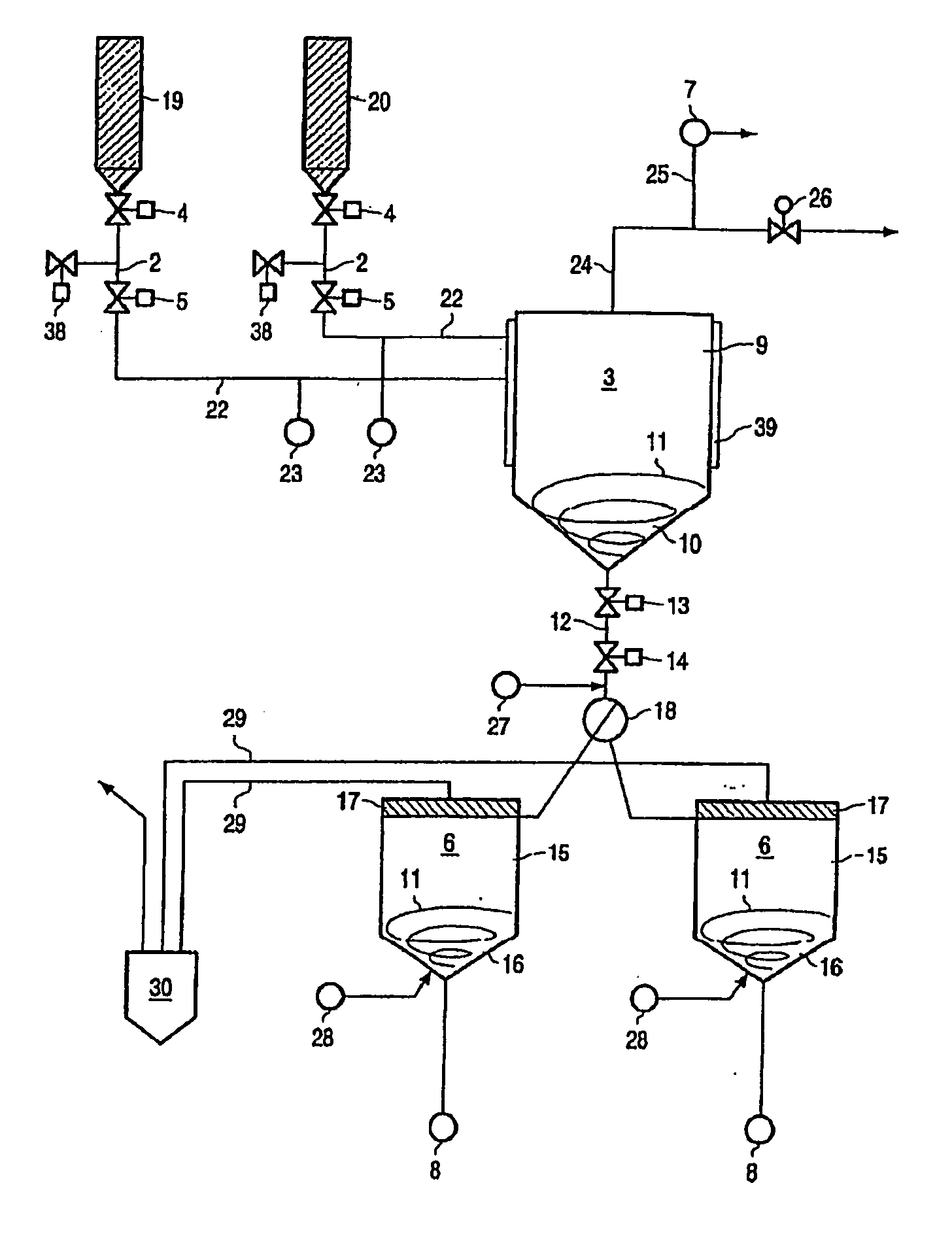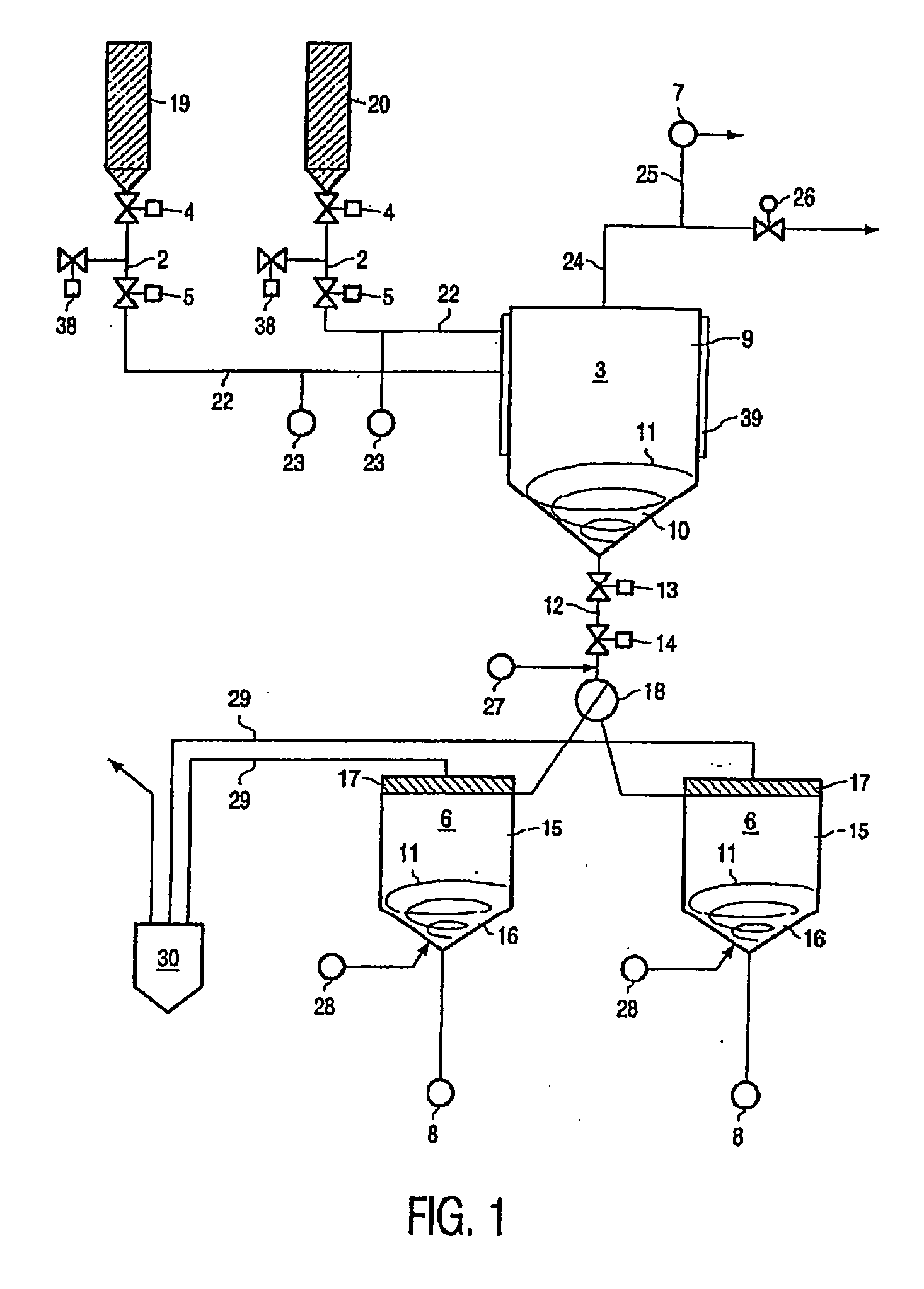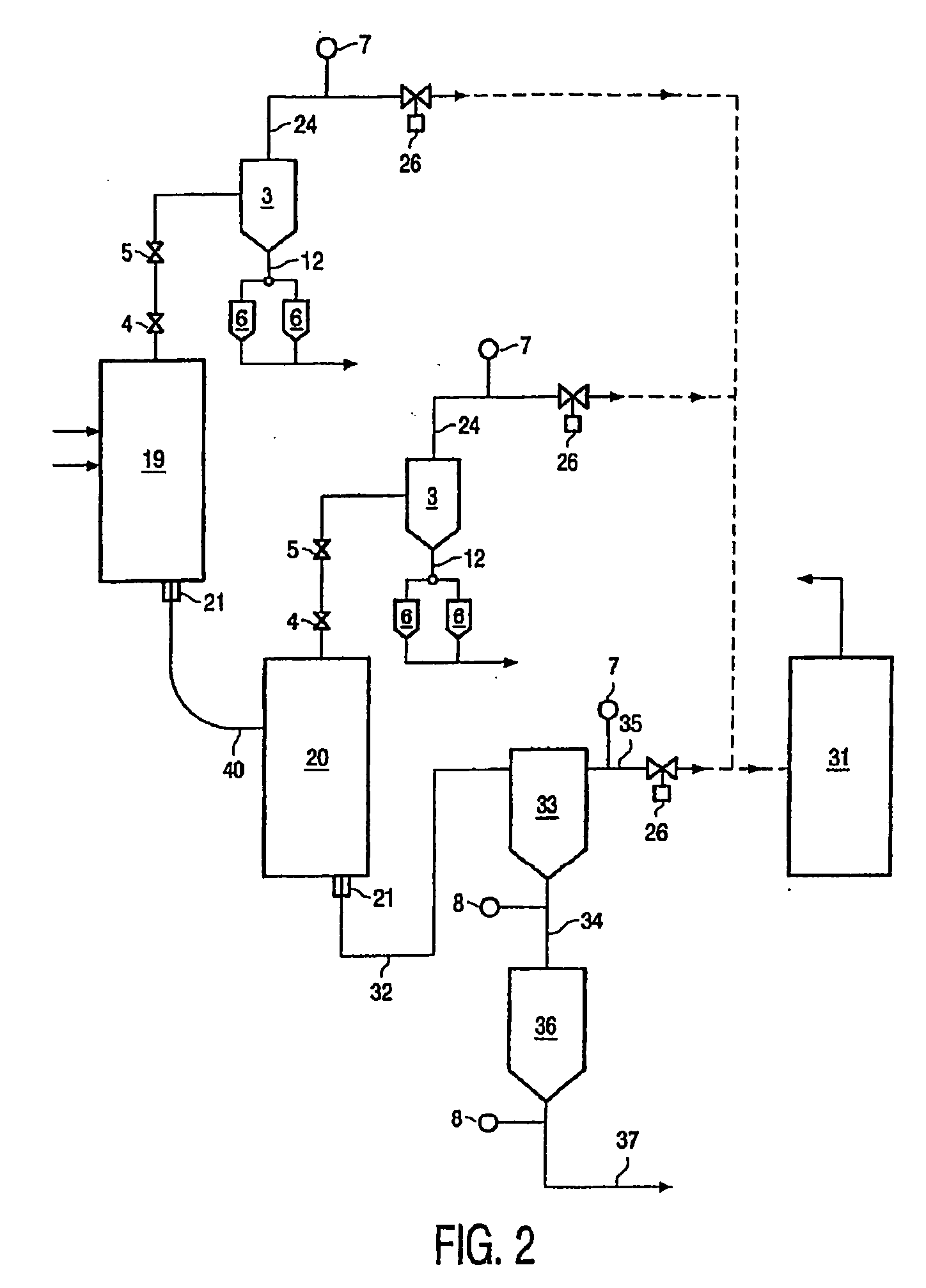Method for improving a polymerization reaction by taking out and analysing a sample
a technology of polymerization reaction and sample, which is applied in chemical methods analysis, instruments, porous material analysis, etc., can solve the problems of lag in time between samples, problems such as the settling legs themselves, and almost entirely impossible to obtain representative samples, so as to improve the polymerization reaction conditions, reduce product quality, and improve the effect of polymerization reaction
- Summary
- Abstract
- Description
- Claims
- Application Information
AI Technical Summary
Benefits of technology
Problems solved by technology
Method used
Image
Examples
example
[0120] The following example illustrates the effectiveness of the present invention in better controlling polymerisation conditions and subsequently polymer properties. The reactor used herein is a commercial double loop reactor with the two loops in sequential configuration equipped with a sampling system as described in the present document. The reactor is used to produce a bimodal polyethylene resin. Polymerisation conditions are controlled on both reactors to ensure suitable product properties.
[0121]FIG. 3 shows the effects of using the sampling system of the present invention for controlling polymerisation conditions on the melt flow index of a bimodal polyethylene. FIG. 3 displays the evolution of the scaled melt index over time. The scaled melt index is calculated after completion of the production run in the following way: From the melt flow indices measured during the first 21 hours an average melt flow is calculated. The scaled melt flow index (“MI fluctuations”) is the q...
PUM
| Property | Measurement | Unit |
|---|---|---|
| pressure | aaaaa | aaaaa |
| pressure | aaaaa | aaaaa |
| pressure | aaaaa | aaaaa |
Abstract
Description
Claims
Application Information
 Login to View More
Login to View More - R&D
- Intellectual Property
- Life Sciences
- Materials
- Tech Scout
- Unparalleled Data Quality
- Higher Quality Content
- 60% Fewer Hallucinations
Browse by: Latest US Patents, China's latest patents, Technical Efficacy Thesaurus, Application Domain, Technology Topic, Popular Technical Reports.
© 2025 PatSnap. All rights reserved.Legal|Privacy policy|Modern Slavery Act Transparency Statement|Sitemap|About US| Contact US: help@patsnap.com



